Advice from a PT: 6 Things to Know Before You Take Up Running

Running is one of the most popular forms of exercise worldwide. About 50 million Americans, or 15% of the U.S. population, participated in some form of running or jogging in 2023.
A widely accessible sport, running doesn’t require any fancy equipment, a gym membership, a coach, or a team. All you need to get started is yourself and a pair of training shoes (more on choosing the right shoes later)—and running is easily adaptable to any person’s pace and fitness level.
The fact that running is so approachable is excellent news, because research shows that it has significant physical and mental benefits. Even going on a few one- to two-mile runs each week is enough to improve your cardiovascular health, lower your risk of depression, and reduce your mortality risk.
But even though a pair of running shoes is technically all you need before taking up running, there are a few things we—Doctors of Physical Therapy at Sword Health—want you to understand before you get started as well. So we’ve put together a list of the six most important things to know before diving into the sport as a first-timer—or before getting back into it after time off or injury.
Keep reading to learn how you can reduce the risk of injury, optimize your gains, and get the most out of your runs.
1. Invest in the right shoes for you.
First things first—what type of shoes should you buy?
This depends on two major factors:
- The activity you plan to do most
Figuring this out is simple. Ask yourself if you will mostly be walking, jogging/running, or cross training (i.e. mixing in a few alternative exercises or training modalities that will benefit your running). Your answer helps determine what level of cushion you should look for in your shoes.
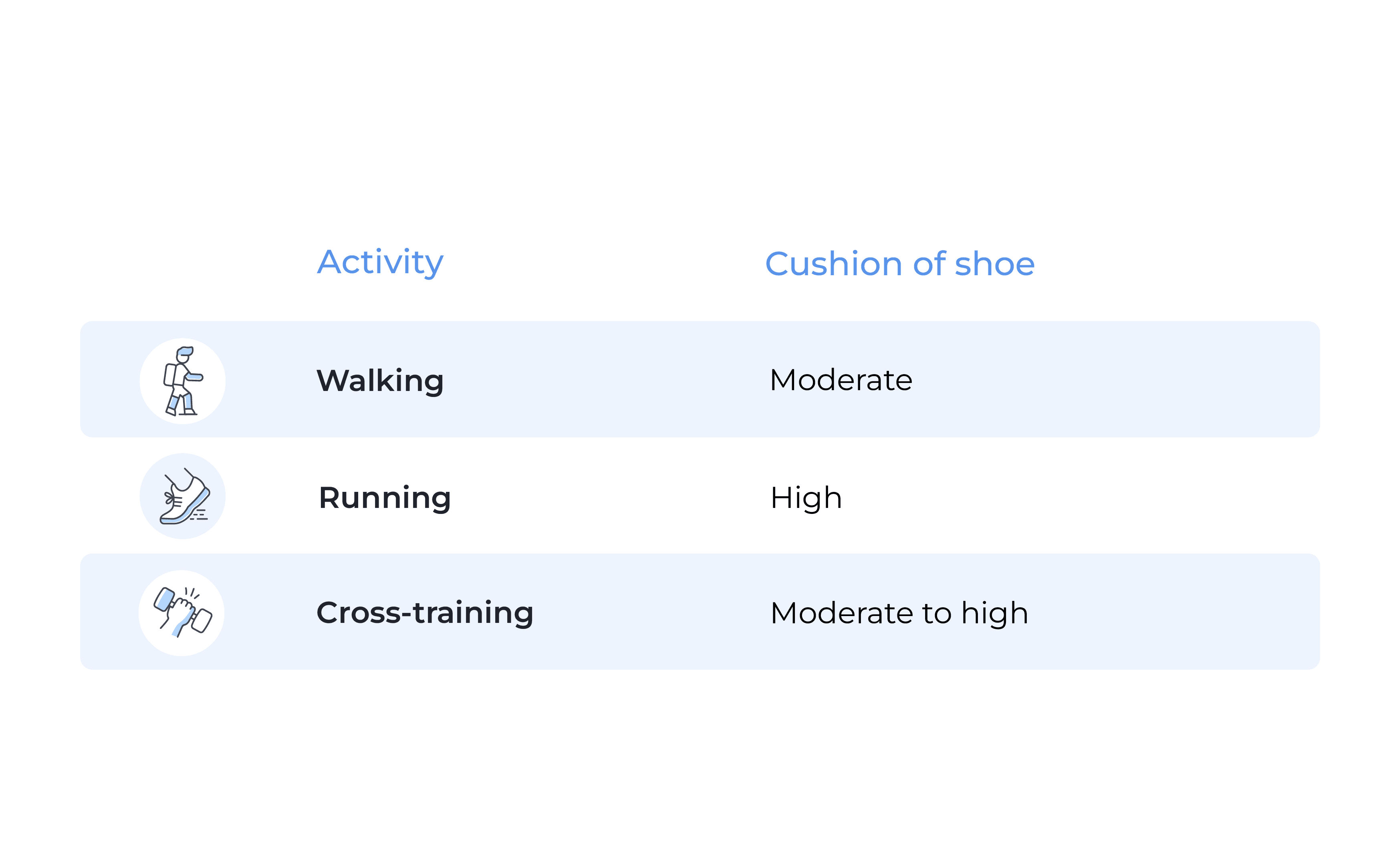
- Your gait
Your gait is how your foot makes contact with the ground while you are walking or running. To determine your gait, we recommend going to a local running store—or, even better, to a clinical expert such as a physical therapist or podiatrist—for a gait analysis. This is when a professional watches you walk or run and examines your biomechanics to determine what shoe type would best complement the way you naturally move.
Of the three gait types below, the neutral strike most evenly distributes the impact of running across the foot and therefore poses the lowest risk of injury. If you don’t naturally have a neutral foot strike—meaning your foot rolls excessively inward (overpronation) or outward (underpronation) when it makes contact with the ground—you will benefit from a shoe shape that helps make your gait as close to neutral as possible.
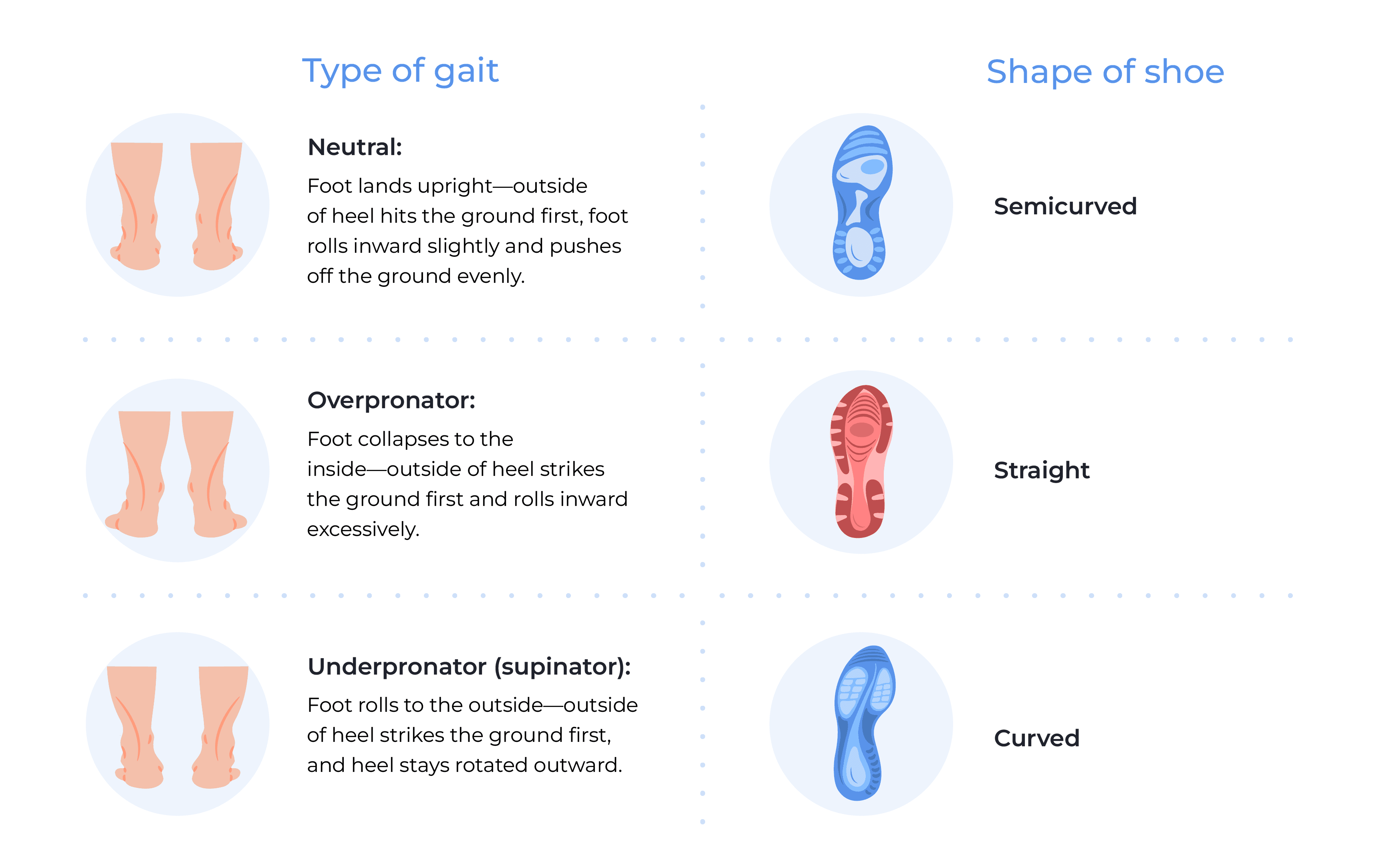
Note: Whatever shoes you choose, they won’t last forever! Their cushioning will wear out with use and stop absorbing shock as effectively, so most running shoes should be replaced after you’ve run 300 to 500 miles in them, or after six months—whichever comes first. Overpronators and underpronators may need to replace shoes more frequently than those with a neutral gait.
2. A good warmup is key to injury prevention.
Warming up before every run should be non-negotiable. A proper warmup gradually raises your body temperature and stimulates blood flow to the muscles, which increases the amount of oxygen they receive. This is important because muscles become more flexible as they get warmer, and they demand more oxygen while exercising than they do at rest. Warming up also gently raises your heart rate to the level you will need to sustain during your run, which can help you utilize oxygen more efficiently, improving your endurance. For all of these reasons, a good warmup greatly reduces your risk of injury.
Aim for a ten-minute warmup during which you work up a bit of a sweat. While some static stretching (holding a muscle under tension for 30+ seconds) can be useful during a warmup, we recommend incorporating mostly dynamic stretching (stretching the muscles through controlled, active movements) because it more effectively raises your heart rate and body temperature.
Here is a sample warmup you can follow:
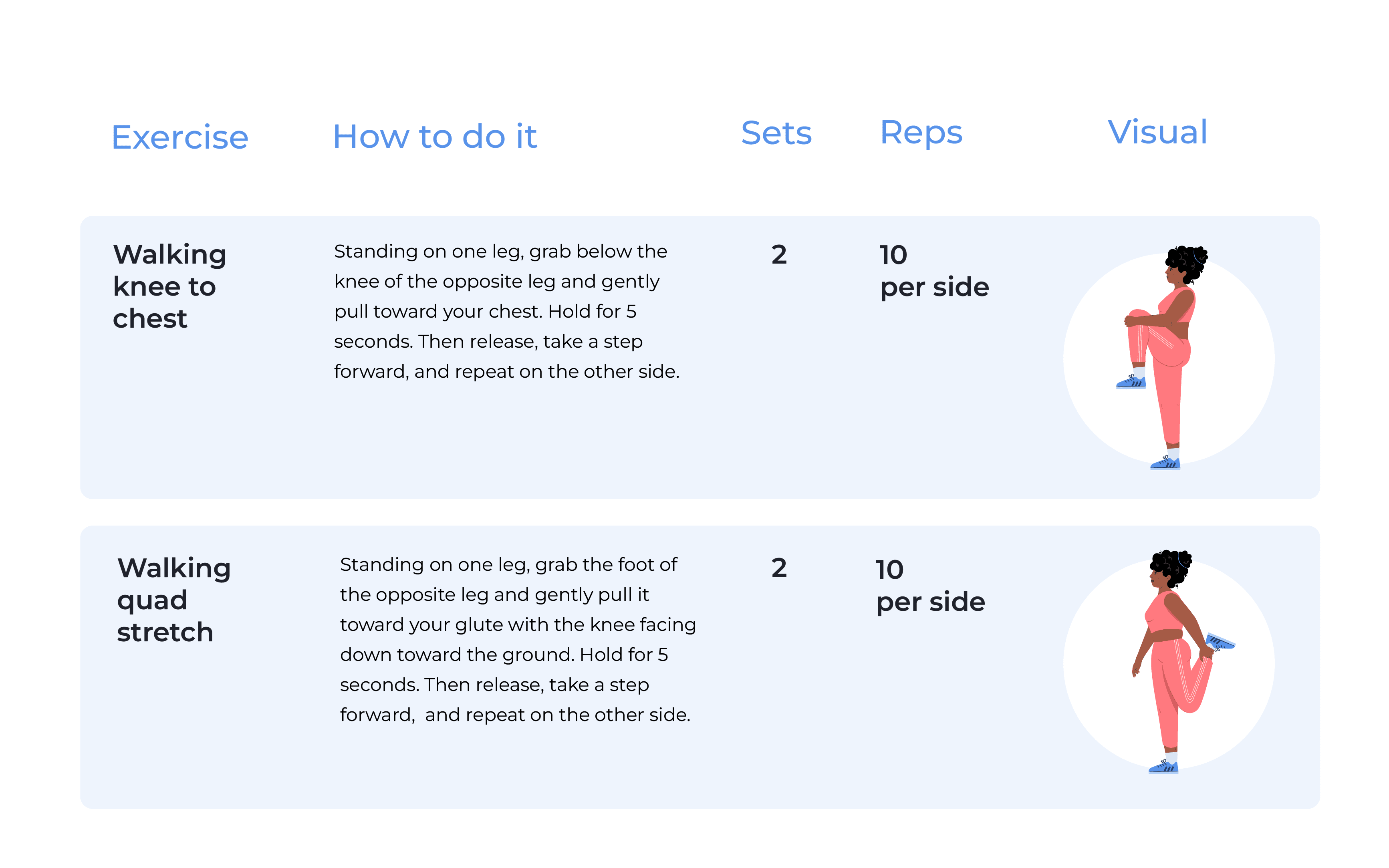
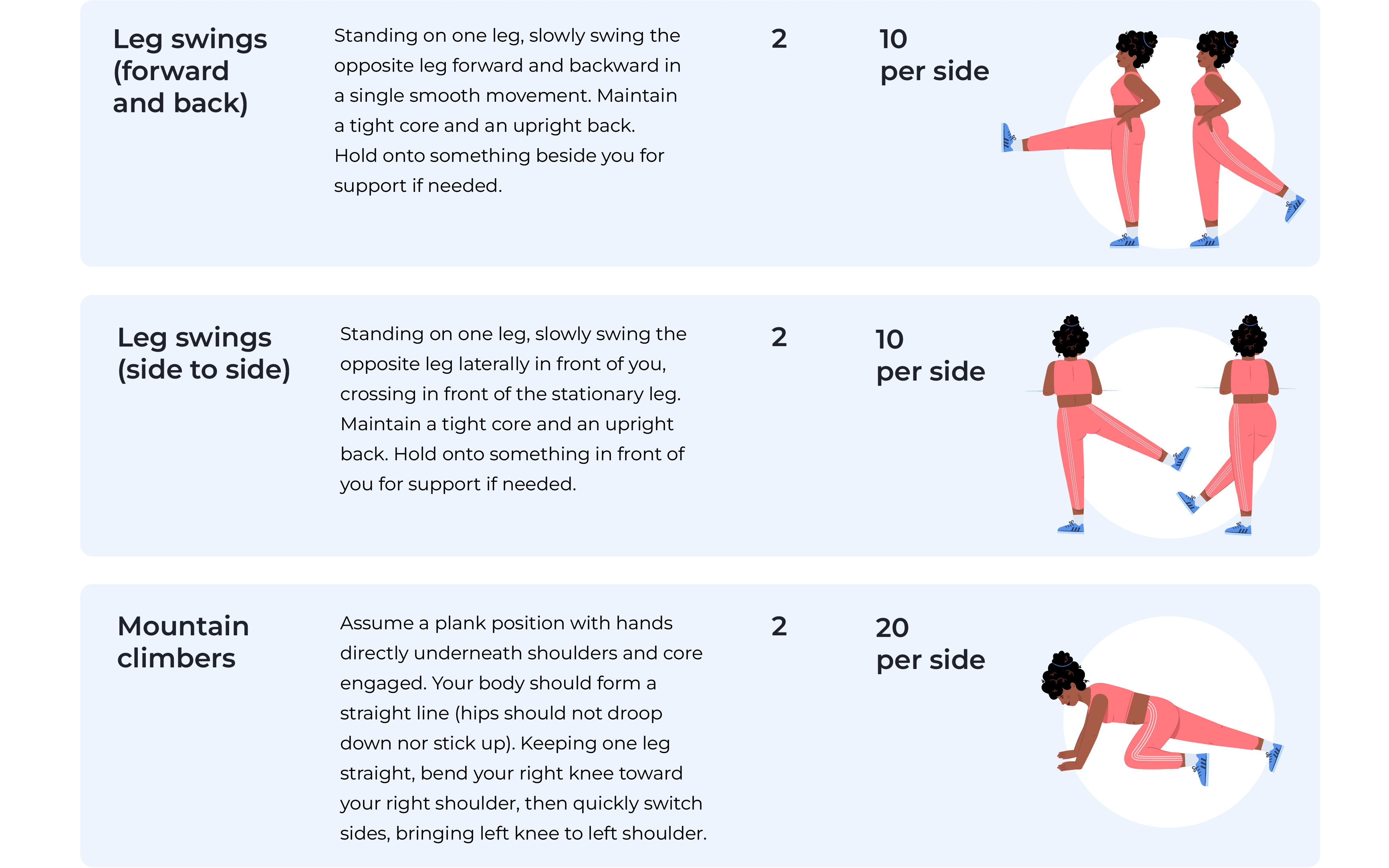
Note: Don’t forget to gradually bring your heart rate and body temperature back down after your run! As a cooldown, we recommend 5-10 minutes of walking or slow jogging followed by 5-10 minutes of static stretching.
3. Prioritize form over speed.
Good running form not only reduces the stress you put on your body and your risk of injury, but also helps you run more efficiently. Get in the habit of running with proper form, even if it means slowing down a bit initially to get it right—once you get used to it, you’ll be able to run faster with more ease and less fatigue.
While good running form will vary slightly based on your anatomy and look a little different from person to person, there are a few general rules to keep in mind—listed here from head to toe:
- Head: Don’t jut your head forward—keep your ears over your shoulders.
- Eyes: Don’t look at your feet—focus your gaze on the ground about 10-20 feet ahead of you.
- Shoulders: Keep your shoulders relaxed and down, away from your ears.
- Arms: Avoid crossing your arms over the midline of your body—keep them close to your body swinging directly forward and backwards, with your elbows tucked in.
- Hands: Keep your hands at the level of your waist, with your arms bent at about a 90-degree angle. Hands should be relaxed, not clenched into a fist.
- Torso: Keep your core engaged and your torso upright, with a very slight forward lean.
- Hips: Keep your hips square, or facing straight ahead, as you run.
- Feet: Aim for a midfoot strike, which is when the ball of your foot makes contact with the ground first. Unlike striking the ground with your heel first, a midfoot strike allows your foot to land directly under your hip, which places less stress on your knees and joints.
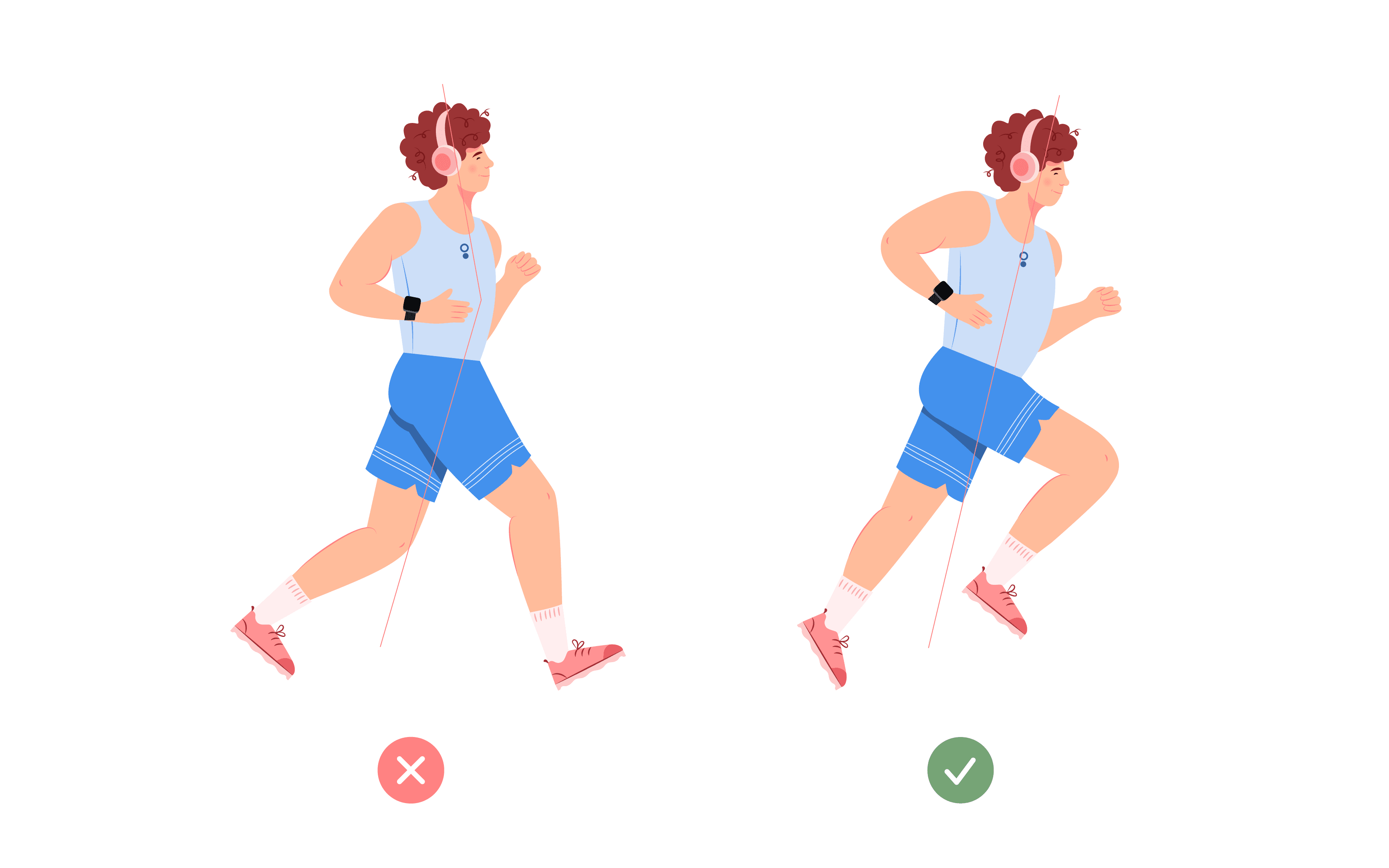
4. Slow is fast when it comes to progression.
Avoiding injury is the fastest way to make progress as a runner. Therefore, progressing slowly and steadily is actually the fastest path to improvement. This is true both for how fast you run and how much you run.
In terms of your running speed, start out by running at a slow, conversational pace that you could maintain for far longer than your planned mileage if you had to. It takes a long time to build an aerobic engine, and jogging at a sustainable pace is the best way to develop one. This also helps you recover properly between runs so that you can stay injury-free and stick to your program.
Of course, how much you run each week will depend on your experience level and your training goals. But generally speaking, we recommend that you don’t increase your total mileage more than 10% week over week. So, if you are running 10 total miles one week, you should not run more than 11 miles the next week. If pain occurs after you make a mileage increase, return to your previous mileage until you’ve had one to two weeks of running with no pain.
Finally it’s important to incorporate both recovery runs and full rest days into your running program. Especially if you are a distance runner, you should plan for one of your runs each week to be shorter and slower to optimize your recovery. And even if all your runs are short distances, you can add variation by taking one of your weekly runs at a slower, easier pace.
If you’re new to running, training for a 5k is a great place to start. Here is a sample 5k training plan you could follow for 18 weeks to prepare for your first race.
5. Proper fueling makes all the difference.
- What to eat before, during, and after runs:
During your runs, your energy comes from glycogen, or sugar, stored in the muscles. Therefore, you should eat in a way that ensures you have enough glycogen stores to keep you going during your training sessions. This means incorporating plenty of high-quality complex carbs—such as whole grains, beans, vegetables, and fruit—into your diet on a regular basis.
If you do, there shouldn’t be any need to eat anything supplemental immediately before runs lasting less than an hour—because the meals you’ve eaten the day before/earlier the same day will have topped off your glycogen stores. However, if you do want something in your stomach during your run, opt for a light, carbohydrate-dominant snack about 30 minutes before you start running. Examples include a banana, a rice cake, some crackers, applesauce, or an energy gel.
For runs lasting longer than an hour, you will likely need to be more strategic about eating before and during your run. This is because your glycogen stores will start to run out after 60-90 minutes of exercise, and they’ll need replenishing. If you’ll be running for 90+ minutes, you should eat a meal about two hours beforehand. Most runners feel best keeping fat and fiber low in their pre-run meals, focusing instead on protein and carbohydrates. Then, during the run, the rule of thumb is to intake 30-60 grams of carbohydrates every hour after the first hour. These mid-run snacks could come from real food sources or energy gels.
Immediately following your runs, no matter the length, eat carbohydrates and protein to restore muscle glycogen and repair damaged muscle tissue.
- How to hydrate for running:
Of course, hydration is key for all runs. You should never start a run dehydrated, so it’s important to maintain your water intake on a regular basis (even on days you don’t run). While water needs vary from person to person, the Institute of Medicine recommends a total of 13 cups (about 3 liters) each day for men and 9 cups (a little over 2 liters) each day for women. Remember: If you feel thirsty, you are already dehydrated!
The best practice is to weigh yourself before and after your run, and replenish with 20-24 ounces of water for every pound you lost during training. For runs under 60 minutes, water is usually sufficient. For longer runs, or runs in very hot/humid weather, opt for a sports drink with electrolytes to replenish what you lost.
6. Strength training will make you a better runner and reduce injury risk.
Last but not least—we recommend supplementing your weekly runs with a couple of strength training sessions. Strength training, also known as weight training or resistance training, is any form of exercise that uses weights or resistance to increase muscular strength and endurance. . Why should you strength train as a runner?
- Having strong muscles and connective tissues reduces the risk of injury. It is especially important to strengthen the core and lower body to reduce the likelihood of overuse injuries in the lower back and knees.
- Improved power and neuromuscular coordination make you a faster, more efficient runner.
- Muscles become more fatigue-resistant, meaning you don’t need to exert as much energy to maintain a given running pace.
How should you strength train as a runner?
- Aim to strengthen the entire body, not just the legs: Of course, having strong legs helps you propel yourself forward as you run. But having a strong core also improves running form, making it easier to keep your core engaged and torso upright. And having a strong upper body improves your arm drive during your run.
- Aim for 2-3 strength training sessions per week, each at least 30 minutes long. A great option is to do one lower body day, one upper body day, and one core strength day each week.
- Keep in mind that long runs and leg days will both be very taxing on your lower limbs, so you’ll want to time them strategically. Try placing a few days between your long run and your leg day so you have plenty of time to recover.
- Great movements to incorporate into your routine include squats, lunges, glute bridges, planks, supermans, pushups, and inverted rows. The great thing about all of these is that they can be done with your bodyweight alone, or with added weight for an extra challenge.
We hope that these tips will help you get off to a strong start on your running journey!
If you ever notice any pain or increased tightness during your runs, we encourage you to meet with a physical therapist in order to assess your movement and get you on the path to pain-free running.
Want access to dedicated clinical experts who can help you prevent, treat, and learn more about pain and injury? Check if you're eligible to become a Sword member through your employer or health plan.


